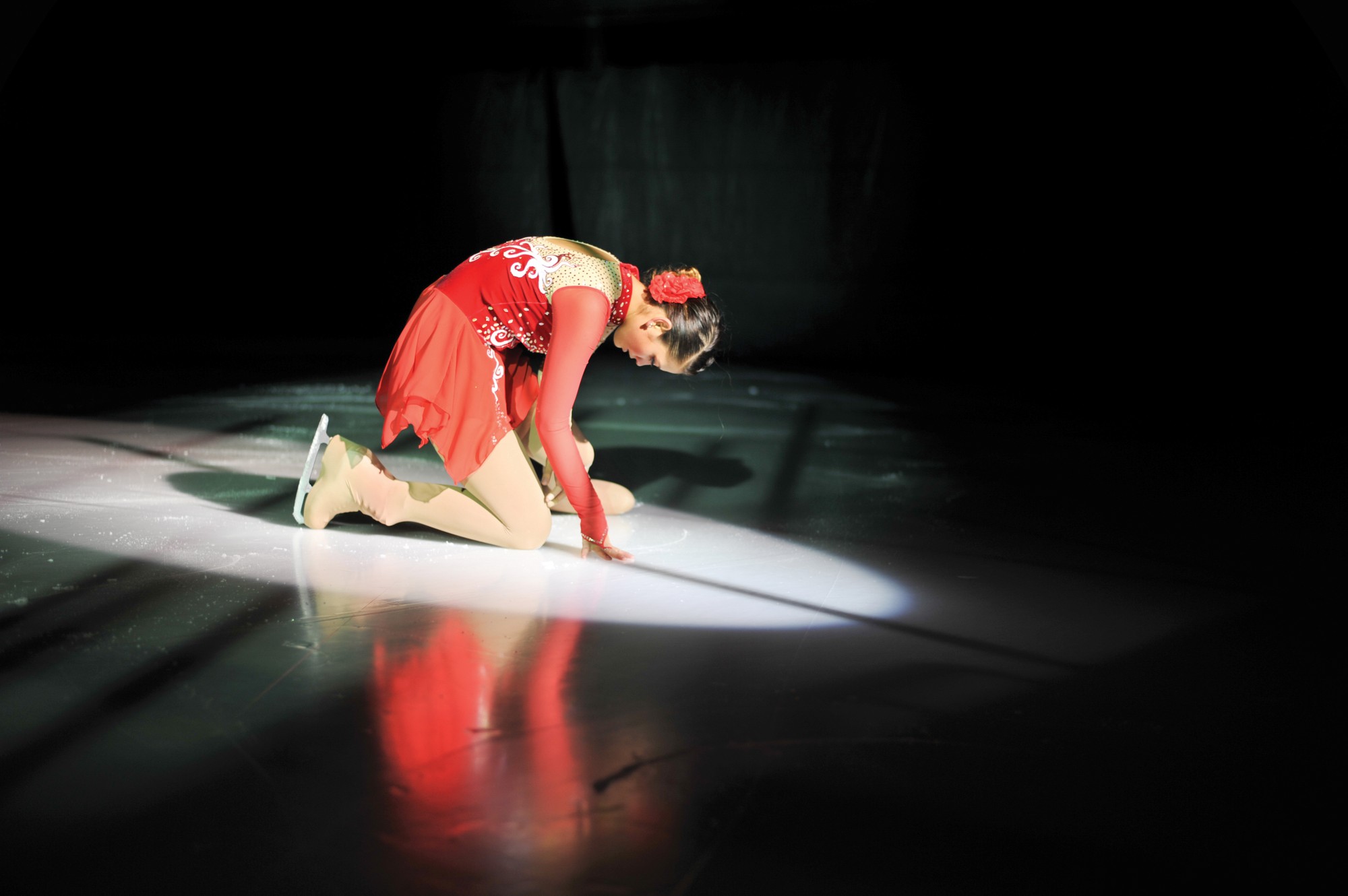Humans of USU: The figure skater
Crowds bundle together in the frigid stadium, watching the ice with bated breath.
The spotlights blaze to life, illuminating the silhouette of Sydney Longhurst on gleaming skates. Music sends the figure skater coasting across the floor. With sashays, jumps and spins, the skater introduces the audience to the art of figure skating, which she has been intrigued by since kindergarten.
Last Saturday, Longhurst performed at the 14th annual Cache Valley Figure Skating Club show. She is also the club’s coach.
The family and consumer sciences education freshman discussed her passion for skating and coaching.
Utah Statesman: How long have you been coaching?
Sydney Longhurst: I’ve been coaching group lessons for two years. I started picking up private students in June just this summer. There were three of my students in the show.
US: Who were they?
SL: Little Andie Shepard, Camie Yuan and Acacia Yuan. It was fun to see them perform and be successful.
US: What did you think of when you saw the performance?
SL: I think it’s so rewarding for them and I love seeing how much fun they have. We coach and we work on things and we practice so hard, and it’s so fulfilling to see the smile on their face. To see how much fun they are having, that they really do love it.
US: Why do you skate?
SL: I grew up in Logan, and [Cache Valley Figure Skating Club] sends out flyers to elementary schools to teach skating classes. We do school outreach here — elementary schools can come and coaches like me can teach them for 30 minutes. We let them play and mess around on the ice. We show that ice skating is a fun thing to do. That’s what sparked my interest. I was in kindergarten, got a flyer, learned to skate for two years then started taking private lessons. And now I’m here after 12 years.
US: What are the skate levels of figure skating?
SL: Obviously there are basic skills. Then it goes into jumping. There’s different jumping levels: single jumps, double jumps, triple jumps. As far as competitions go, I’ve competed in Idaho, California, Nevada and Arizona. That’s our region. Then there is sectionals, nationals, worlds, but that’s not for me.
US: Where do you want to go with skating?
SL: I reached my peak when I was about 14 so I just do shows, I don’t compete anymore. I’ve tested out. I just like to do shows and coach. I love to share my passion for skating with little ones and show them how. That’s what my goals are for now. I come here to skate twice, three times a week. I also work here. I coach and work at the front desk. I basically live here.
US: What are some difficulties in skating?
SL: It’s very mental. Because it’s an individual sport, it’s all on you. When you go to competitions and someone’s judging you and you’re the only one out there, it feels like you’re under a lot of pressure. But obviously everything can’t be perfect. It’s definitely a mental health sport. We have tons of adults who take learn to skate to recover from an injury. It’s just strength training and balance.
US: Do you get nervous performing?
SL: I’m not really nervous anymore. At the beginning I shake, in my starting pose, but once I get started it’s OK. The spotlight’s kind of hard sometimes. It kind of blinds you sometimes and you lose where you are.
US: How often do you practice?
SL: Two hours a day, four or five days a week. I’m here a lot. If I have a day and I just am so exhausted, I will come skating. I just needed to come and skate around. I do a lot of off-ice training a lot too.
US: Off-ice training?
SL: You do off-ice jumping with shoes on instead of skates. Strength training. You train yourself all around.
US: What would you say to someone who aspires to be a skater?
SL: Have a love for it. First you have to love something, be passionate about something. That’s what I believe in all of life, really. If you’re passionate about something you’ll be able to do it. So just come into public and have a good time and love it.
— ashley.ruth.stilson@aggiemail.usu.edu

